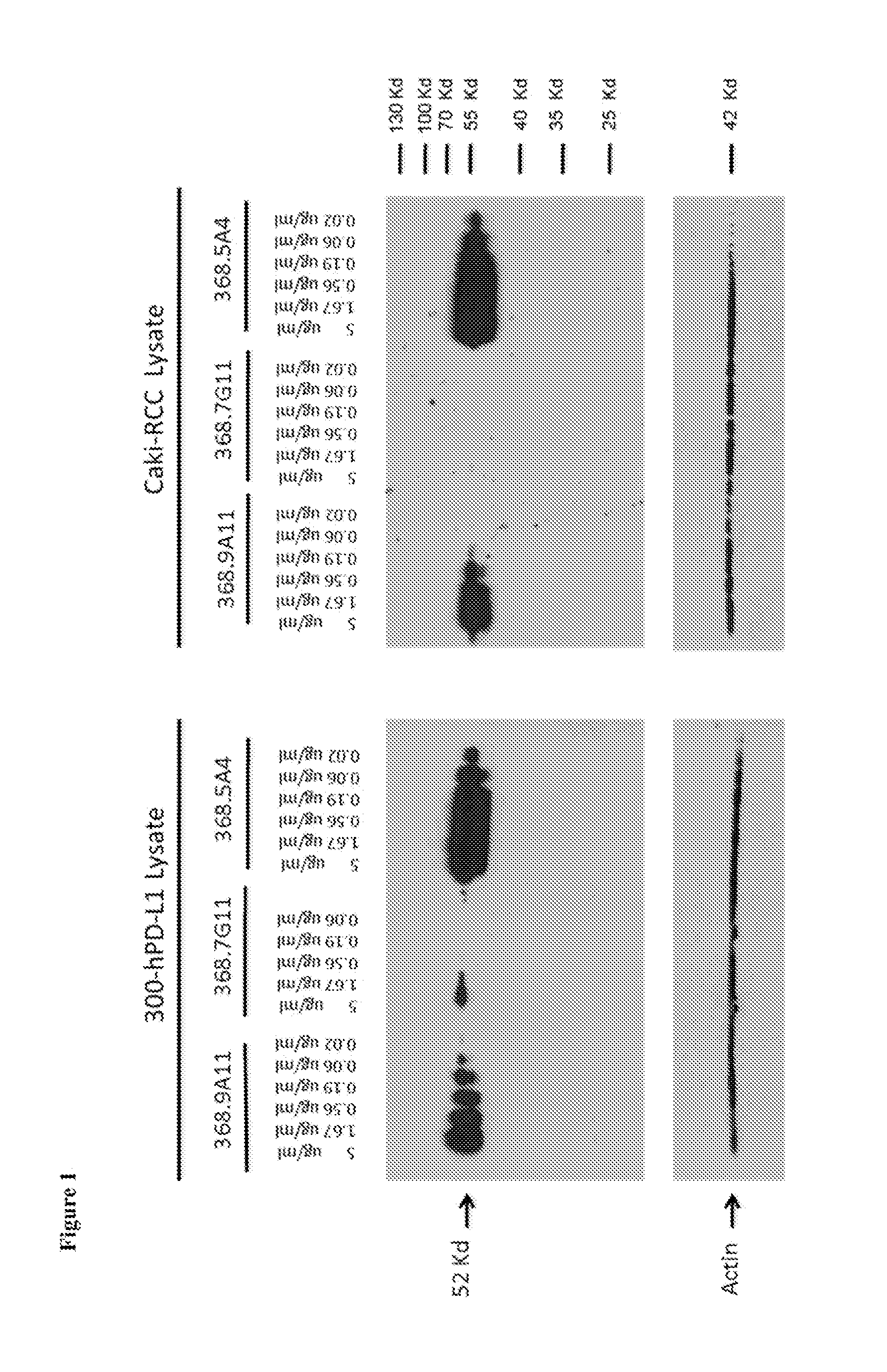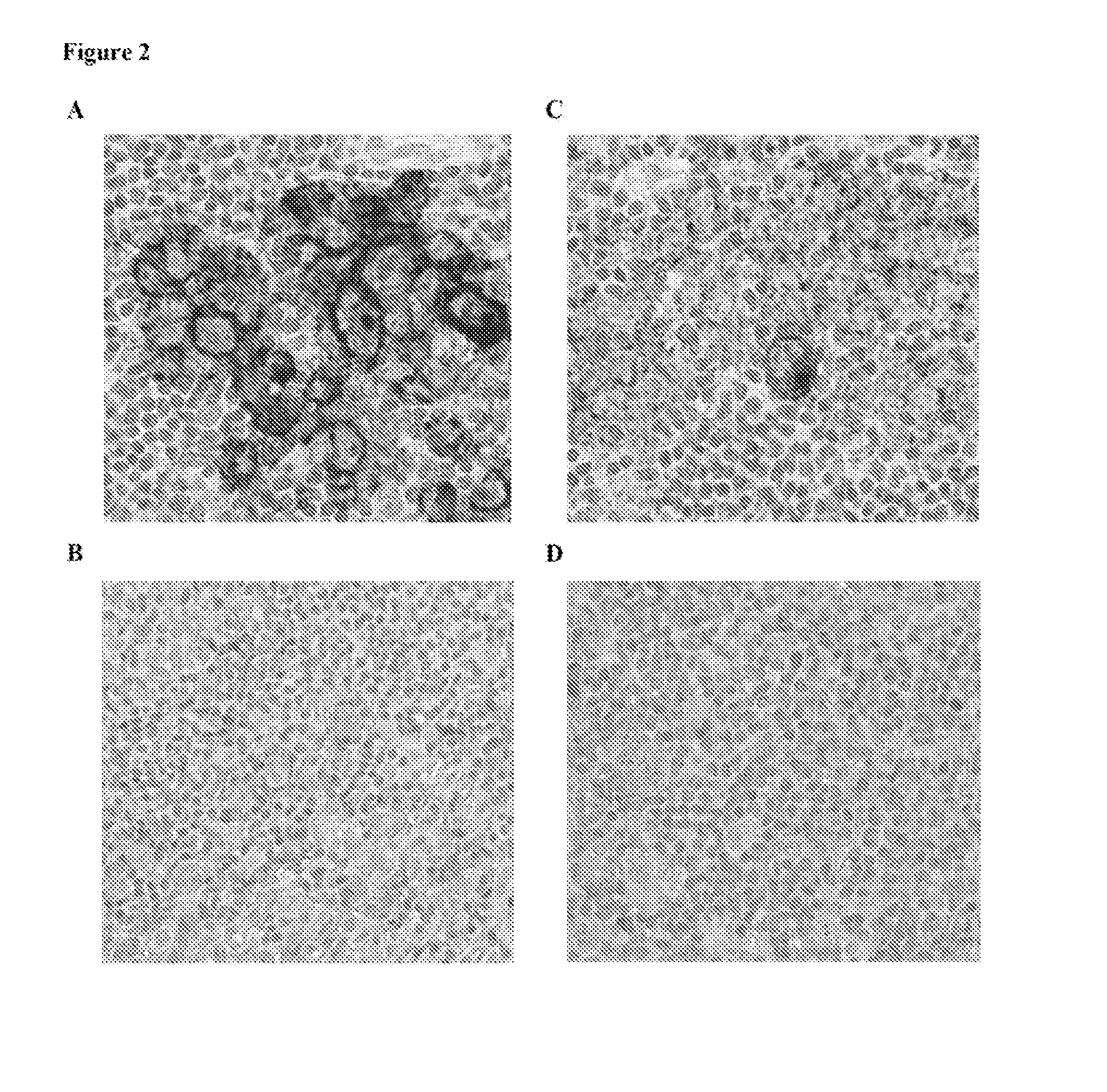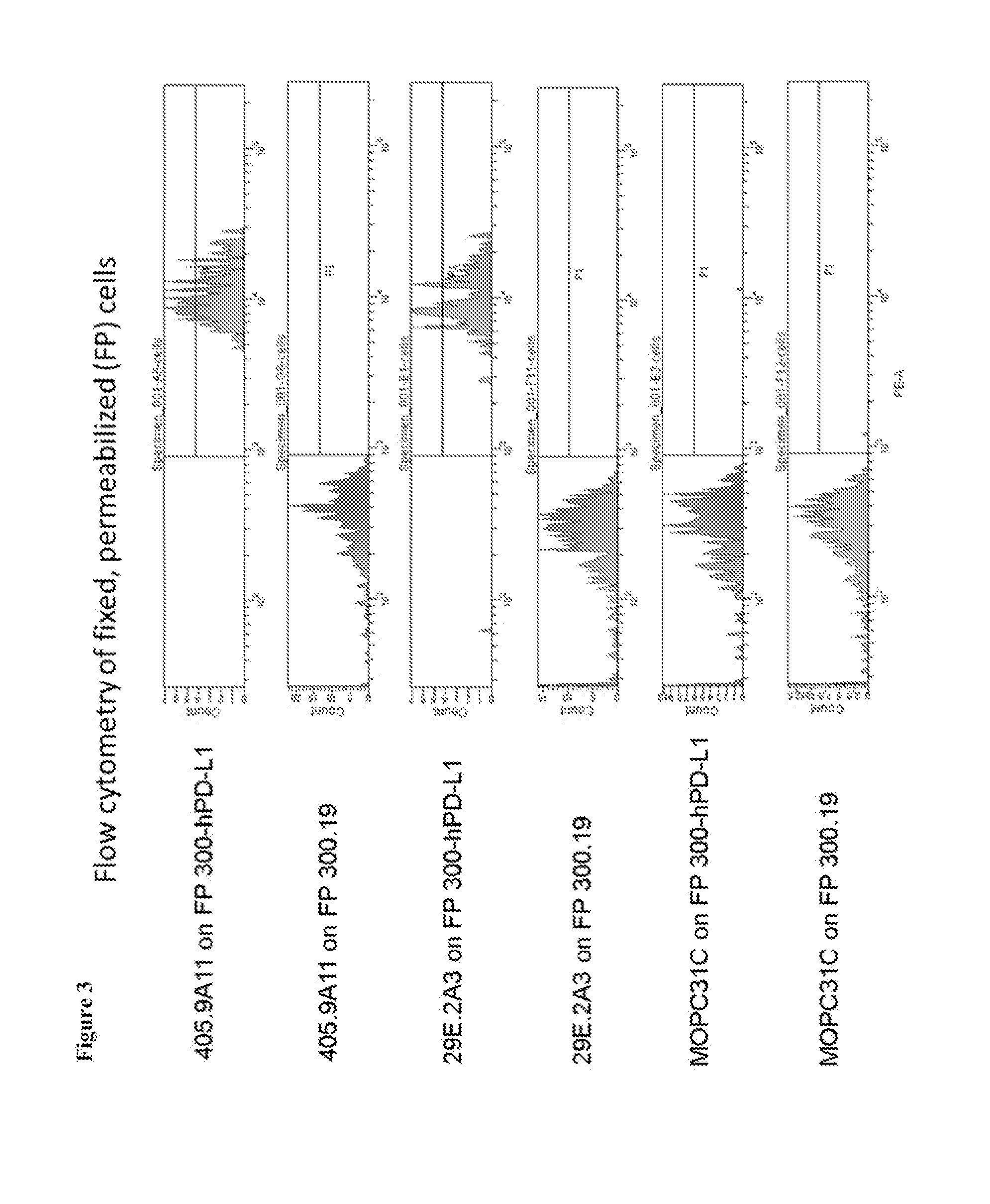Anti-pd-l1 monoclonal antibodies and fragments thereof
- Summary
- Abstract
- Description
- Claims
- Application Information
AI Technical Summary
Benefits of technology
Problems solved by technology
Method used
Image
Examples
example 1
Anti-PD-L1 Monoclonal Antibodies that Target the PD-L1 Cytoplasmic Domain
[0219]The Programmed death-1, PD-1, pathway is a critical immune checkpoint pathway involved in peripheral tolerance. PD-1 is a B7 / CD28 superfamily receptor expressed on activated and exhausted T cells, as well as some activated B cells, dendritic cells, and monocytes. PD-1 negatively regulates lymphocyte function through signaling triggered by the interaction with its ligands, PD-L1 and PD-L2 (Brown et al. (2003) J. Immunol. 170:1257-1266; Freeman et al. (2000) J. Exp. Med. 192:1027-1034; Latchman et al. (2001) Nat. Immunol. 2:261-268). The PD-1 pathway downregulates the intensity and duration of immune responses. PD-L1 is expressed on many hematologic cells including dendritic cells, macrophages, mesenchymal stem cells, and bone-marrow derived mast cells (Yamazaki et al. (2002) J. Immunol. 169:5538-5545) and is induced on activated T cells and macrophages. PD-L1 can be inducibly expressed on epithelial and en...
example 2
PD-L1 Expression in Primary Clear Cell Renal Cell Carcinomas (ccRCCs) and their Metastases
[0282]Clinical trials evaluating anti-PD-1 and anti-PD-L1 antibodies (Abs) in ccRCC have shown efficacy in a subset of patients. Tumor PD-L1 expression increases the likelihood of benefit with anti-PD-1 Ab, but fails to identify all responders. One explanation for these results is that predictive biomarkers are usually evaluated in the primary tumors, which may not accurately reflect expression in the metastases (mets) that are targeted by therapy. Accordingly, PD-L1 expression was compared in a series of ccRCCs and their mets.
[0283]Formalin-fixed paraffin-embedded tissue blocks from 33 primary ccRCCs and corresponding lymph node or distant mets were retrieved. Multiple areas of the primary tumors, including areas of predominant and highest Fuhrman nuclear grade (FNG), were selected for analysis. Slides were immunostained with a validated mouse monoclonal anti-PD-L1 Ab (405.9A11). Membranous ex...
example 3
Association of PD-L1 Expression on Tumor Infiltrating Mononuclear Cells and Overall Survival in Patients with Urothelial Carcinoma
[0286]In the United States, there were more than 72,000 new cases of urothelial carcinoma (UC) in 2013 with 30% of initial cases presenting with muscle-invasive disease (Stein et al. (2001) J. Clin. Oncol. 19:666-675). Close to 50% of those who are diagnosed with muscle invasive disease will develop metastatic disease. Metastatic UC remains largely incurable and the mortality rates have not changed substantially over the past two decades (Kaufmann et al. (2009) Lancet. 374:239-249). Although cisplatin-based cytotoxic chemotherapy has led to improved clinical outcomes, the median OS is 14-15 months and no effective salvage treatment options are available. Many targeted therapies have been also studied in advanced UC (Pons et al. (2014) Exp. Opin. Invest. Drugs 23:115-124), besides the limited population with specific genomiet alterations that are druggable...
PUM
| Property | Measurement | Unit |
|---|---|---|
| Fraction | aaaaa | aaaaa |
| Fraction | aaaaa | aaaaa |
Abstract
Description
Claims
Application Information
 Login to View More
Login to View More - R&D
- Intellectual Property
- Life Sciences
- Materials
- Tech Scout
- Unparalleled Data Quality
- Higher Quality Content
- 60% Fewer Hallucinations
Browse by: Latest US Patents, China's latest patents, Technical Efficacy Thesaurus, Application Domain, Technology Topic, Popular Technical Reports.
© 2025 PatSnap. All rights reserved.Legal|Privacy policy|Modern Slavery Act Transparency Statement|Sitemap|About US| Contact US: help@patsnap.com



